Alchemy Arktos Custom - Review
Alchemy's 152mm-travel Arktos Custom is about as exotic, and maybe as rare, as an albino lobster in the tank at your local Fish Shack restaurant. Based in Denver, Colorado, Alchemy are best known in road circles for creating custom carbon road frames, and earlier this year they launched their first carbon mountain bike, a hardtail 29er called the Oros. But the lobster that we're testing here is their first full-suspension bike, and it features a unique rear-end design called Sine Suspension that employs a clean looking dual-link layout.
The Arktos Custom's carbon fiber front triangle is made in the good ol' US of A, which no doubt plays a roll in the frame's $3,799 USD price tag. That's a big chunk of change, but it's also about $50 more than a Specialized S-Works Stumpjumper frame or roughly $250 more than a Yeti SB6 frame. The Arktos with the XT build shown here, complete with Praxis' impressive C32 carbon wheels, retails for $7,999 USD.
If, like me, you're thinking that this particular albino lobster is above your pay grade, Alchemy is now including a standard Akrtos frame on their menu that's born in Asia rather than the US and costs $800 USD less than the Custom model.
If, like me, you're thinking that this particular albino lobster is above your pay grade, Alchemy is now including a standard Akrtos frame on their menu that's born in Asia rather than the US and costs $800 USD less than the Custom model.
Arktos Custom Details
• Intended use: all-mountain / trail
• Rear wheel travel: 152mm
• Wheel size: 27.5''
• US-made carbon front triangle
• 66° head angle
• 438mm chainstay length
• 12 x 148mm rear spacing
• Sizes: S, M, L, XL
• Weight: 28lbs 15oz
• Frame price w/ Fox Float X: $3,799 USD
• MSRP as tested: $7,999 USD
• Intended use: all-mountain / trail
• Rear wheel travel: 152mm
• Wheel size: 27.5''
• US-made carbon front triangle
• 66° head angle
• 438mm chainstay length
• 12 x 148mm rear spacing
• Sizes: S, M, L, XL
• Weight: 28lbs 15oz
• Frame price w/ Fox Float X: $3,799 USD
• MSRP as tested: $7,999 USD
 The Arktos Custom's carbon fiber front triangle is manufactured in the United States, while the rear-end comes from Asia.
The Arktos Custom's carbon fiber front triangle is manufactured in the United States, while the rear-end comes from Asia.Frame Details
Alchemy has been making carbon road frames in the United States for years now, so they know a thing or two about how to do carbon fiber manufacturing. The entire process is done in-house, from cutting the molds to laying up the carbon sheets that will eventually become a bicycle frame, to painting the frames in what seems like near countless color options and assembling all the parts. Basically, raw ingredients head into the factory at one end, and complete bikes roll out the other.
The whole process isn't one that's commonly done in the United States these days, and it flies in the face of nearly everything else that's being made in Taiwan and mainland China. ''Well, it’s about investing in the engineering and design up front,'' Matt Maczuzak, Vice President of R&D at Alchemy, said of the company's methodology when he spoke to Pinkbike's Vernon Felton earlier this year. ''We spent a lot of time and effort figuring out how do we build this thing as smartly and efficiently as humanly possible. It’s the way we mold it and the way we process it afterward.''
 Internal routing and a clean looking design give the Arktos a tidy appearance, but it might be too tidy for some - there are no ISCG tabs or place to bolt on any type of chain guide.
Internal routing and a clean looking design give the Arktos a tidy appearance, but it might be too tidy for some - there are no ISCG tabs or place to bolt on any type of chain guide.And what comes afterward is one hell of a good looking bicycle. The Arktos has a clean, uncluttered appearance going for it, with its two short suspension links mostly hidden inside the front triangle and behind the swingarm. Shift, dropper post, and brake lines run inside the frame - there is no external option - and a threaded bottom bracket means that mechanics can happily leave both their hammer and their press in the tool box.
As you'd expect, the rear hub spacing is a 12 x 148mm setup, but it's what isn't present that caught my attention: no ISCG 05 chain guide tabs and no place to bolt on a top-only, direct-mount chain guide means that Arktos Custom owners will depend entirely on their clutch derailleur and narrow/wide chain ring. That'll be enough for many riders, but I could see some wanting to fit a guide, or just some protection, given that it's a six-inch-travel bike. You could, of course, use an old school adapter plate sandwiched between the frame and drive-side bottom bracket cup. Interestingly, the less expensive ''standard'' Arktos frame that comes out of Asia and costs $800 less does come with removable ISCG 05 tabs.
 The Arktos' 152mm of travel is controlled by its Sine Suspension dual-link layout.
The Arktos' 152mm of travel is controlled by its Sine Suspension dual-link layout.The Arktos' Suspension Explained
The Arktos' Sine Suspension was penned by Dave Earle, a man whose resume also includes developing Yeti's Switch suspension system, and stints as the Senior Engineer at both Santa Cruz and Specialized. It's fair to say that he knows a thing or two about designing a mountain bike.
While the Arktos could pass for a single pivot bike with a rocker link to actuate its shock, its Sine Suspension is, in fact, a dual-link design, with the lower link tucked away inside the frame. According to Alchemy, the system has a suspension curve that's regressive up to the shock's sag point for traction and small bump compliance, and then progressive until the last 15% of the bike's travel to create a more playful, energetic feel.
It becomes regressive again at the end of the stroke to best work with how an air shock naturally ramps through its stroke.
It becomes regressive again at the end of the stroke to best work with how an air shock naturally ramps through its stroke.
That last bit of travel, where it becomes regressive, is where the design differs from a VPP system. On VPP bikes the curve remains progressive for the entirety of the bike's travel. Because air shocks are inherently progressive, ramping up towards the end of their stroke, having the suspension curve become regressive is meant to give the bike a bottomless feel, allowing it to remain supple even during large impacts.
 What could be mistaken for a single-pivot desgn is actually clean looking dual-link system. The lower link is tucked into the frame and hidden behind the swingarm.
What could be mistaken for a single-pivot desgn is actually clean looking dual-link system. The lower link is tucked into the frame and hidden behind the swingarm.Mike Levy: The Arktos' Sine suspension has what looks to be a relatively unique curve that starts regressive before going progressive and then finally regressive again. What does this do for the rider?
David Earle: Suspension travel of the rear wheel can be divided into three areas; each area has a specific function. First is negative travel through sag point, second is mid range, third is deep travel to bottom out. The ideal suspension system will be designed to optimize each of these areas for the best suspension performance. Negative travel is responsible for small bump feel and should be plush, mid range should be firm and lively, end of travel should avoid ramping and feel bottomless, without bottoming out... That is exactly what Sine Suspension does, the shock rate is a big part of this, other kinematic variables play a role in this to a smaller extent.
Levy: The Arktos pedals extremely well. Is this down to a relatively high amount of anti-squat, or is there another reason?
Earle: There is not a high amount of anti-squat on the Arktos, it is just enough to keep it level when pedaling. Pedaling efficiency is not only due to anti-squat, it is how the anti-squat relates to the shock rate (mostly). Basically, there are two forces that push the wheel down; one is the shock force, and one is the chain force (basically anti-squat). Balancing those two together is the trick for pedaling efficiency. The Sine Suspension shock rate actually promotes stable pedaling itself as well. High anti-squat does not necessarily give good pedaling performance; it can make the bike have bad traction and if it is very high will make the bike rise up in heavy efforts. It's really a balance of the entire kinematic system that gives good pedaling.
Levy: What would you tell a rider who wants to put a coil-sprung shock on the Arktos?
Earle: Coil shocks... The bike was designed for air shocks, both the kinematic design and the mechanical design are for air. I have not ridden the bike with a coil, so I really cannot comment. I think it would ride well with a coil; I cannot see why it wouldn't. That said, the mechanical design was done for air shocks... I think it might be difficult to mount most coils.
Specifications
| ||||||||||||||||||||||||||||||||||||||||||||||||||||||||||||
Climbing
That big 4x4 truck sucks on the highway; it's hard to eat soup with a fork; you probably wouldn't survive a canoe trip across the Atlantic. If you want to be really good at something, it usually makes sense to use specialized equipment. There's a reason why cross-country bikes do cross-country stuff well, why downhill bikes go down all the things, and why, for a long time, all-mountain bikes kinda sucked at most tasks. But it's rigs like the Arktos that, by being relatively proficient at doing stuff that it shouldn't be - I'm talking about climbing, of course - are proving that the gap between a solid mid-travel bike and more focused machines is always shrinking.
I don't mean to say that it's really good climber for a 152mm-travel bike; I mean just a really good climber, period. It feels as efficient and full of life as something with 20mm, or even 30mm, less travel, which is ideal if you're the kind of person who likes to pedal a very capable bike over long distances. Basically, the Arktos doesn't make it seem like you're paying a price for lugging around six-inches of travel, partly because it's a relatively lightweight thing but also because you don't feel like the bike is sucking the life force out of your legs as if it's some sort of slow moving ham beast on wheels. You can leave the shock open and spin up anything, even at thirty-five percent sag, and it obviously gets even better if you flip the cheater switch to the Trail setting. The firmest mode is almost too firm for any sort of off-road climbing, though, unless you plan on bar-humping your way up fire roads at max effort.
 Like to Climb? The Arktos does that job incredibly well. Don't like to climb? At least you won't be able to blame it on the bike.
Like to Climb? The Arktos does that job incredibly well. Don't like to climb? At least you won't be able to blame it on the bike.The Arktos' 66-degree head angle isn't exactly EWS worthy these days, but that's clearly not what Alchemy had in mind when they penned this bike. It also means that it doesn't feel like you're steering it from behind the rear wheel when rolling through switchbacks or other technical sections. It is, of course, not as nimble as a bike with less travel or steeper numbers, but it manages to be more of a very capable, long-legged trailbike than a watered down enduro race rig when the going gets tough and a lot of riders start to unclip or tip over embarrassingly.
Combine the easygoing handling with bucket loads of traction from the weighty but grippy Minion tires run around 20 PSI (possible due to the wide Praxis C32 carbon rims) and the Arktos feels surprisingly capable under duress. The traction is there for you, the bike's numbers aren't of the silly, new-school sort where it's so slack and long that you get the impression that you're on a tandem, and unlike some other six-inch-travel bikes, it's not about simply managing to get the Arktos to the top of the mountain by any means necessary.
Those who enjoy not just the descending, but also the climbing aspect of a ride will have a good time on the Arktos due to the bike's efficient and technically adept nature. Simply put, it's one of the best ascending six-inch-travel bikes we've had on test; a sort of powerlifter who loves a long cardio workout every now and then.
Descending
The Arktos is full of beans on the descents, partly due to geometry that doesn't require the speed and handling skills of a pro racer to unlock, and partly because it's an efficient feeling platform that rewards a rider's efforts with a whole load of momentum. It's no Slash or Spartan when things are really fast and rough, but most riders are going to have much easier time getting the Arktos off the ground at low speeds or through the back-to-back corners where the second begins while you're still in the middle of the first. It's very Mojo HD3-ish in this regard, in that Alchemy has made the Arktos never feel like too much bike but it still has your back when you send it into a section of trail that's more dangerous than asking an ISIS warlord where the local internet cafe is located.
 Alchemy's 152mm-travel Aktos sits more on the fun and playful side of the breed than some other bikes of similar ilk.
Alchemy's 152mm-travel Aktos sits more on the fun and playful side of the breed than some other bikes of similar ilk.And while you can't quite charge blindly into things and expect nearly guaranteed traction and triumph like you almost always can on a slacker, longer bike, the Arktos chassis, wide Praxis C32 carbon wheelset, and Minion tires do make for a capable package. It's a relatively sharp handling thing, and it's certainly one of the more lively and responsive bikes in this class. The fact that it is so fun on tame trails, or when not riding at ten tenths, is what makes it such a great machine. Well balanced would be a good way to put it, with just the right amount of sharpness to the steering to keep it from being more of a lazy sack of suspension, but not so much so as to take away from what a six-inch-travel bike should excel at - descending.
When it comes to the Arktos' suspension, the Fox 36 fork is superb in every metric that you could rate. Supple, ultra-tuneable, and as supportive as an AA sponsor, it's a big reason why the Arktos is as fun as it is. The Float X shock also works well, and it's probably a simpler and smarter choice for a bike that's not an out and out enduro race rig, but the front of the bike almost calls for a Float X2 on the back to match. There were a few times when, having launched into a mess of roots or rocks, that the rear-end felt a tad spiky for how much travel it has. A more adjustable Float X2 might be the solution for those who ride at a high level or have the terrain and coconuts that call for it. It's hard to tell if the bike's Sine Suspension system and it's tricky curve really makes a difference, to be honest, but it probably plays a part if why the Arktos feels so playful - that middle-stroke support likely helps.
 Those who like to leave the ground and take different lines will find a willing partner in the Alchemy.
Those who like to leave the ground and take different lines will find a willing partner in the Alchemy.While the Arktos is a fun bike, it's also one that audibly lets you know how fast you're going when crossing over those same roots and rocks. I guess you could think of the chain slap as a rad-o-meter that tells you how rowdy you're getting, but an old tube and a bunch of tape seemed liked the better choice.
There's a very clear distinction between the Arktos and slacker and longer-travel bikes like the Slash and Spartan, but that's to be expected. I'd choose the Akrtos every day of the week if I weren't an extremely fast rider who focuses on enduro races (I don't). Something like the latest Remedy and a Mojo HD3 are both far more comparable, of course, and I'd argue that the first example is the most capable of the three when it comes to scary and/or fast terrain. It's a toss up between the HD3 and the Arktos, which is a real compliment to what Alchemy has created: One of the best all around six-inch-travel bikes on the market, and one that's going to tickle the fancy of a rider who loves to be on something exotic and rare.
Technical Report
• No Chain Guide: You better hope that your clutch derailleur and narrow/wide chain ring are in fine working order, as there's also no ISCG tabs nor a location to bolt on a top-mount mini-chain guide of some sort. I realize that the Akrtos is more of a trailbike and an enduro rig, but I still feel like it should be easy to mount a guide on such a bike if required. It does have a threaded bottom bracket shell, so you could go with a hokey ISCG adapter plate if you're really needing some extra chain control... Or you could pay $800 less to get the Asian-made Arktos that comes with tabs. Just sayin'.
 Praxis' Girder cranks, and especially their carbon C32 wheels, are standout components that probably don't get the attention that they should.
Praxis' Girder cranks, and especially their carbon C32 wheels, are standout components that probably don't get the attention that they should.• Pivot Problems: There was some trouble with the Arktos' main pivot, with the drive-side finding a way to come loose multiple times, despite copious amounts of thread locker and a lot of yelling at it and fist shaking. Alchemy says that a few early test bikes, but none that went out to customers, had this issue and that their own in-house machine shop that manufactures these links remedied the problem awhile back. In other words, those who've bought an Arktos shouldn't have to yell at it.
• Praxis Wheels and Cranks: Praxis' new C32 carbon wheels have to be one of the best options out there for a rider that wants a wide, sturdy carbon wheelset. They're true to this day, despite a handful of nasty moments that surely would have knocked an aluminum rim on the back of the bike out of alignment, and their 1,628-gram weight, 32mm inner width, and $1,799 USD MSRP make them more attractive than a handful of other options on the market. Both the front and rear hub shells are of Praxis' own design, and they've dropped in DT Swiss' 36-tooth Star Ratchet system rather than the higher tooth option because it's proven to be more reliable. The bike's Praxis Girder cranks also seem top notch and were trouble-free.
Pinkbike's Take:
 | There are only a handful similarly usable six-inch-travel bikes on the market when it comes to all-around capabilities. This travel bracket is littered with rigs that are really good at this or that but are about as fun as a hernia operation at the opposite task, which is why the Arktos is such a standout - it does pretty much everything to a high level. Whether or not you feel that makes it worth the coin is up to you, but there's no denying that Alchemy have created something special. - Mike Levy |

About the Reviewer
Age: 35 • Height: 5'10” • Inseam: 33" • Weight: 165lb • Industry affiliations / sponsors: None • Instagram: killed_by_death
Mike Levy spent most of the 90s and early 2000s racing downhill bikes and building ill-considered jumps in the woods of British Columbia before realizing that bikes could also be pedaled for hours on end to get to some pretty cool places. These days he spends most of his time doing exactly that, preferring to ride test bikes way out in the local hills rather than any bike park. Over ten years as a professional mechanic before making the move to Pinkbike means that his enthusiasm for two wheels extends beyond simply riding on them, and his appreciation for all things technical is an attribute that meshes nicely with his role of Technical Editor at Pinkbike.
Age: 35 • Height: 5'10” • Inseam: 33" • Weight: 165lb • Industry affiliations / sponsors: None • Instagram: killed_by_death
Mike Levy spent most of the 90s and early 2000s racing downhill bikes and building ill-considered jumps in the woods of British Columbia before realizing that bikes could also be pedaled for hours on end to get to some pretty cool places. These days he spends most of his time doing exactly that, preferring to ride test bikes way out in the local hills rather than any bike park. Over ten years as a professional mechanic before making the move to Pinkbike means that his enthusiasm for two wheels extends beyond simply riding on them, and his appreciation for all things technical is an attribute that meshes nicely with his role of Technical Editor at Pinkbike.
Author Info:
Must Read This Week
[UPDATED] Final Elite XC Results & Overall Standings from the Mairiporã XC World Cup 2024
41711 views
41711 views
Sign Up for the Pinkbike Newsletter - All the Biggest, Most Interesting Stories in your Inbox
PB Newsletter Signup
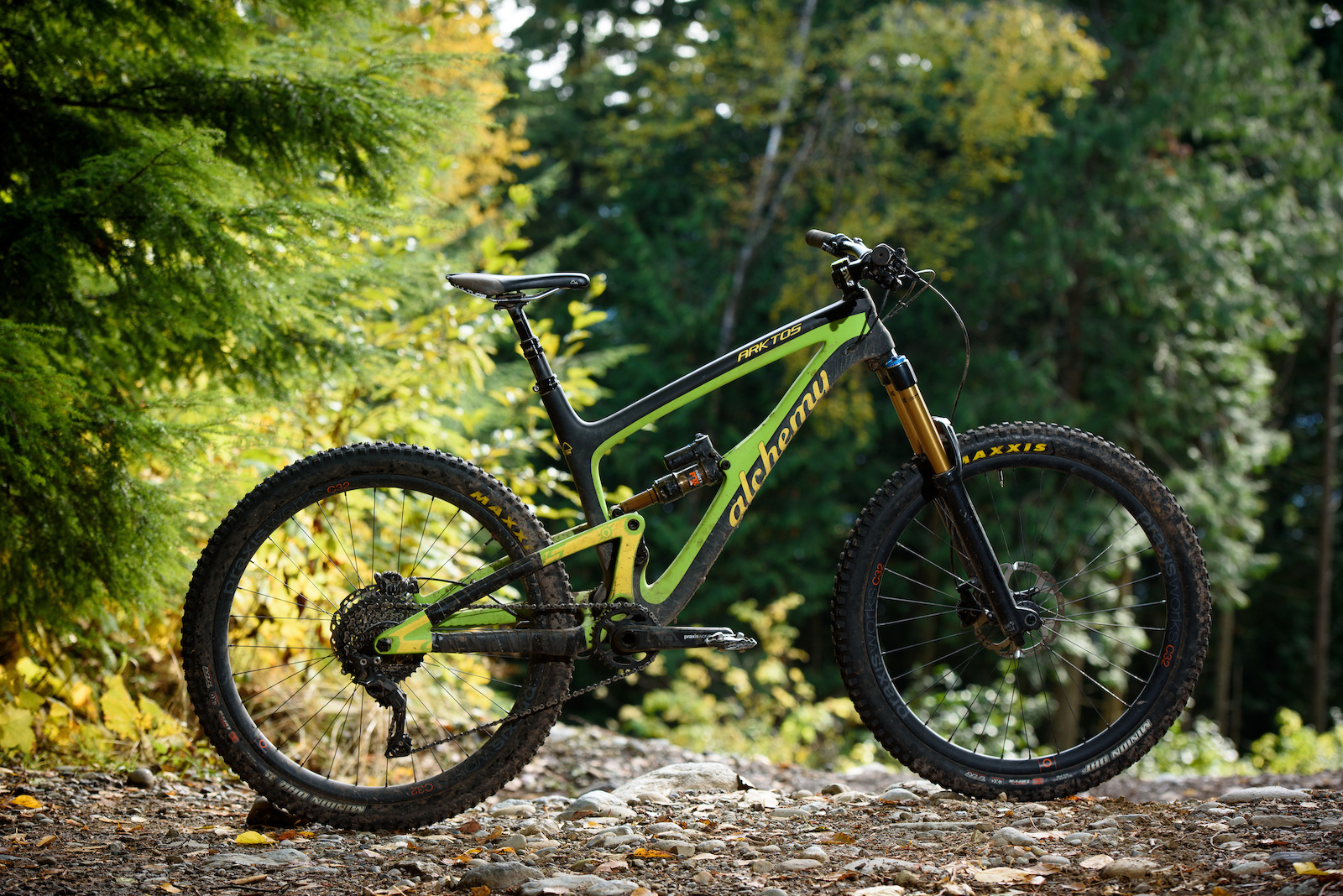
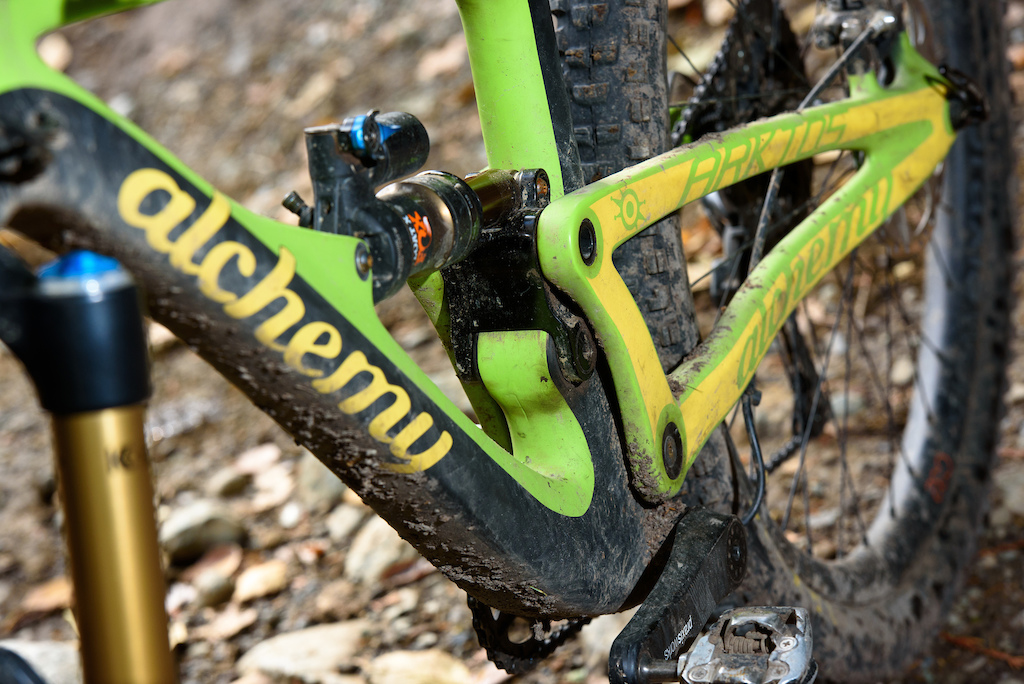
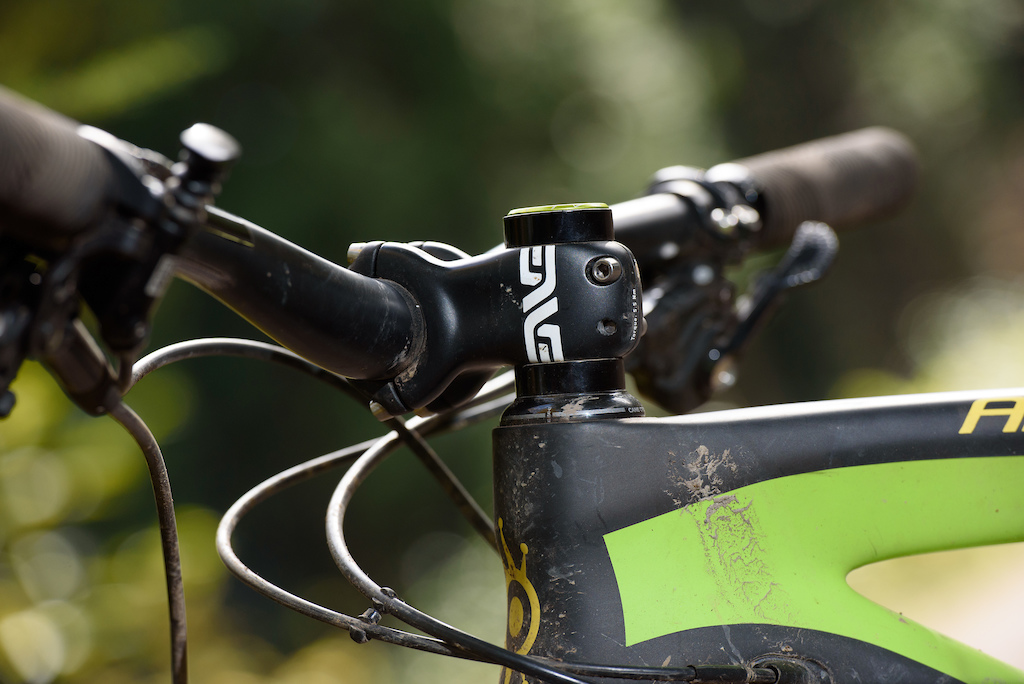
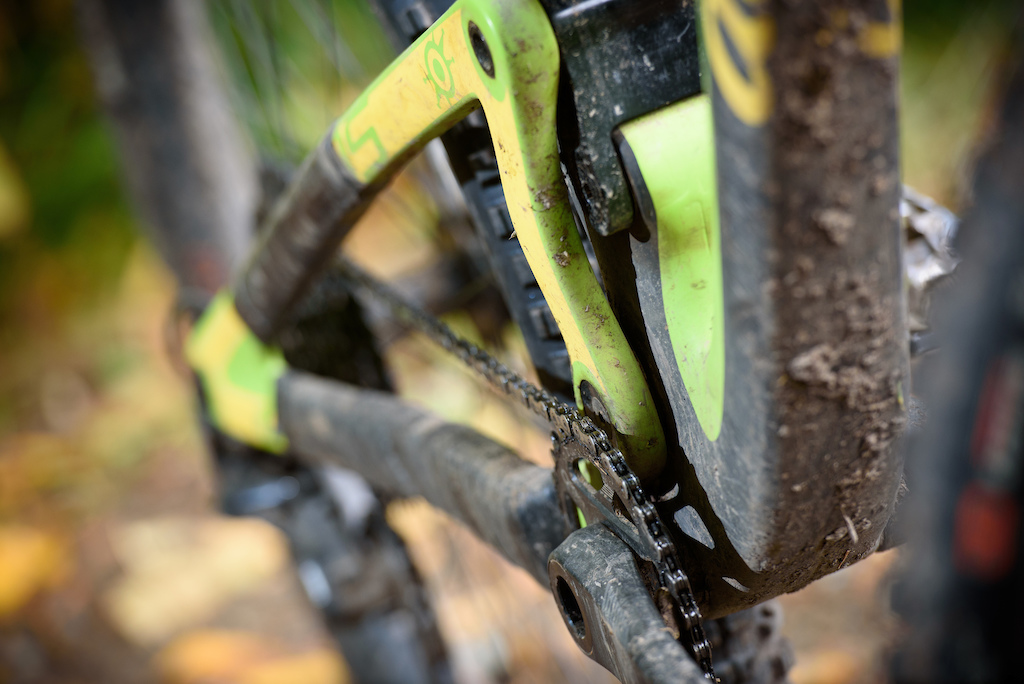
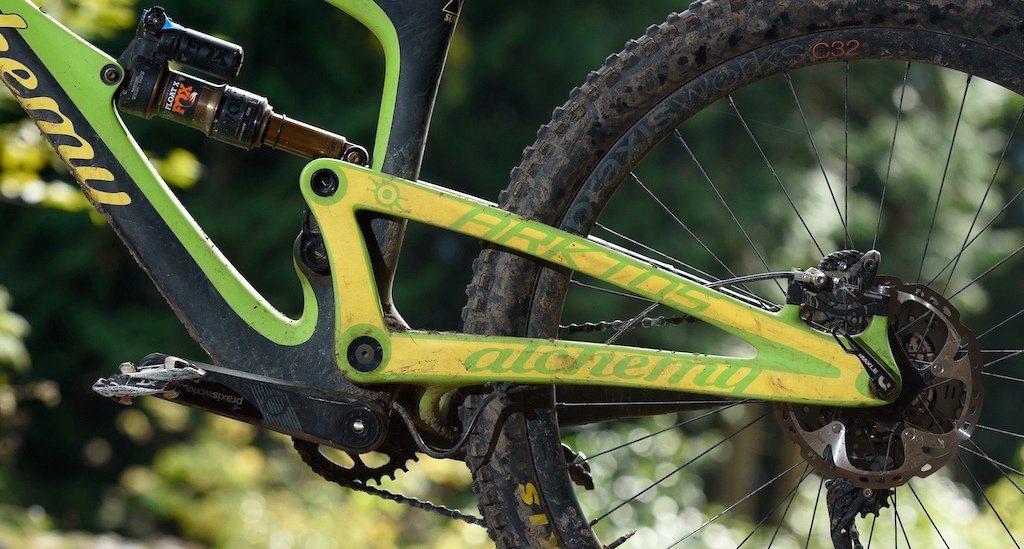
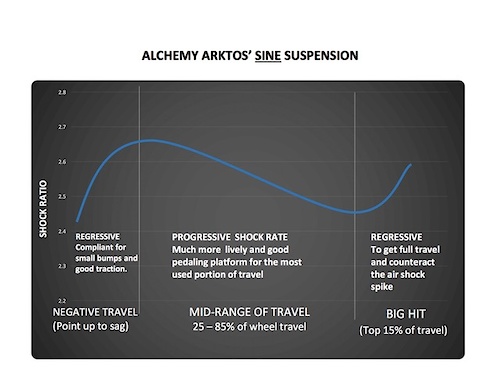
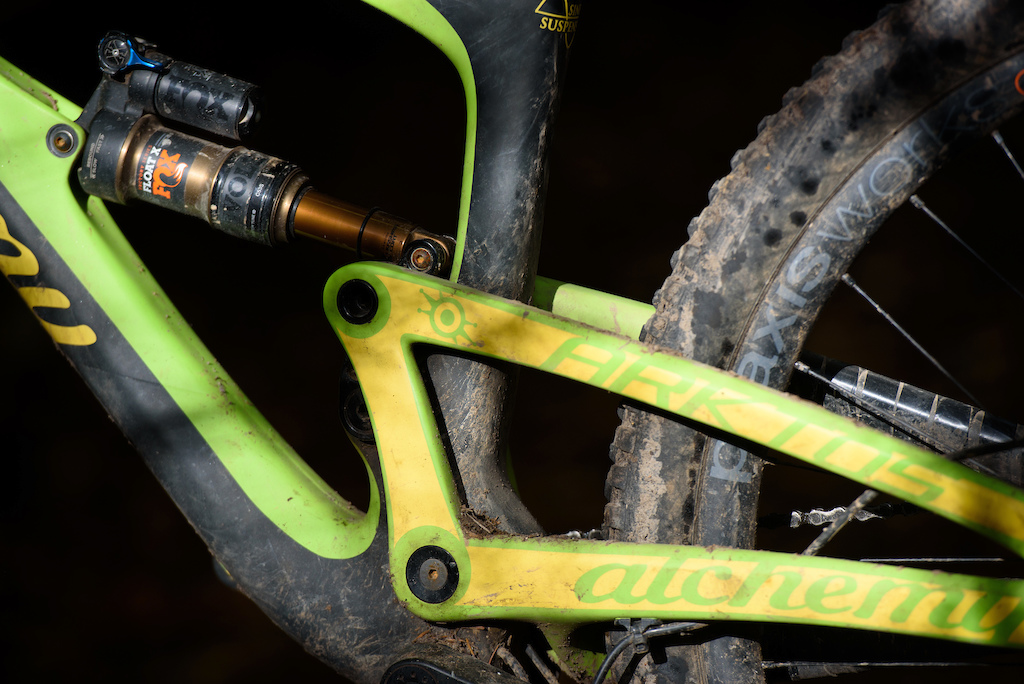
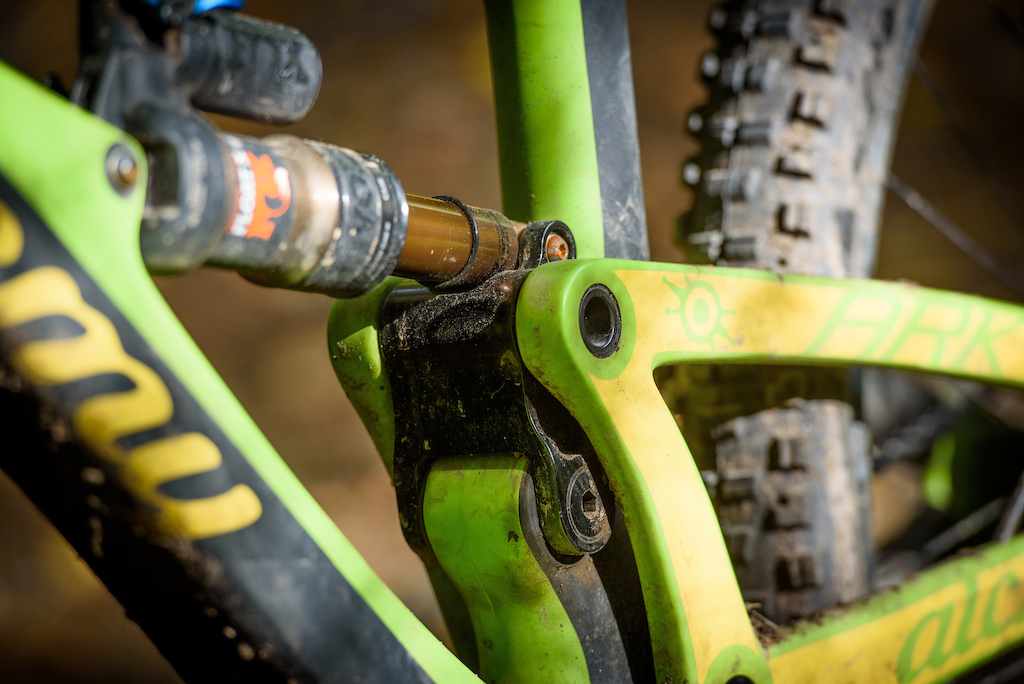


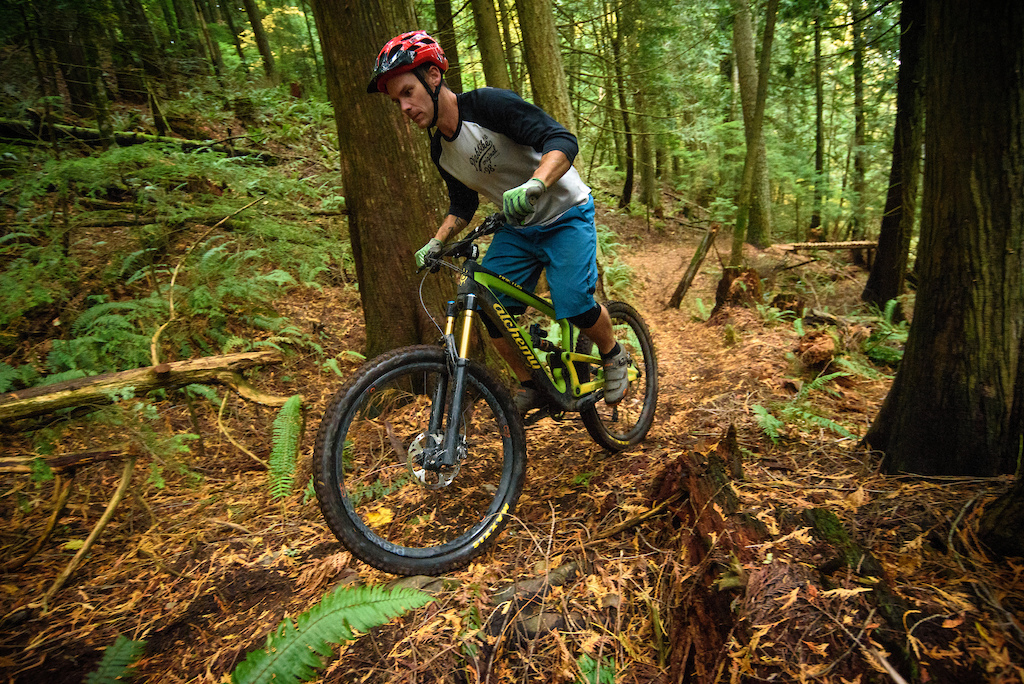
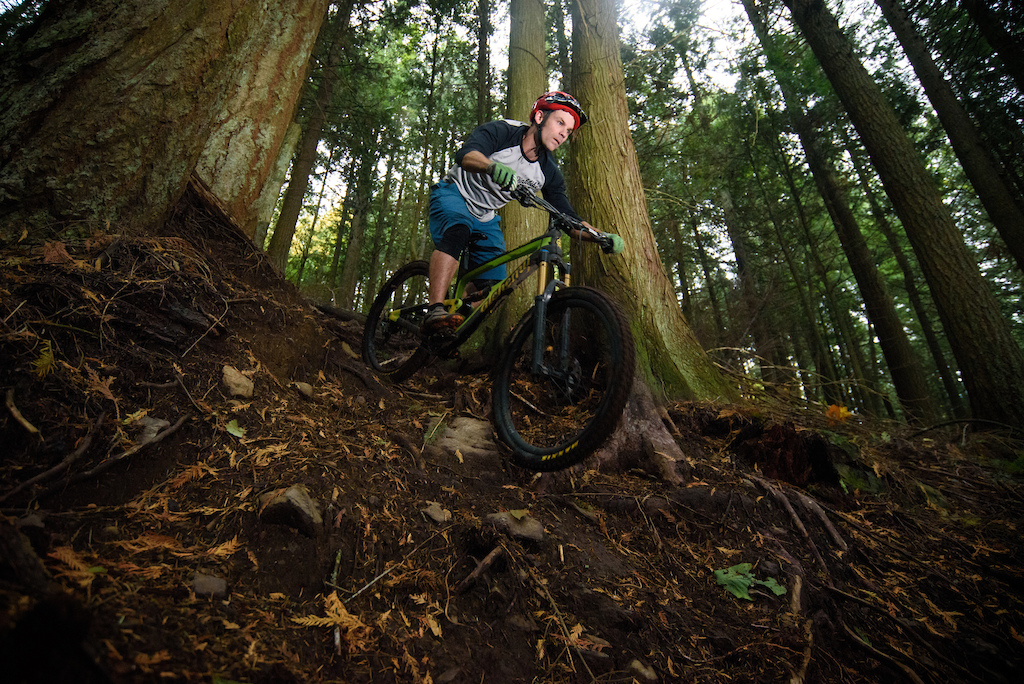

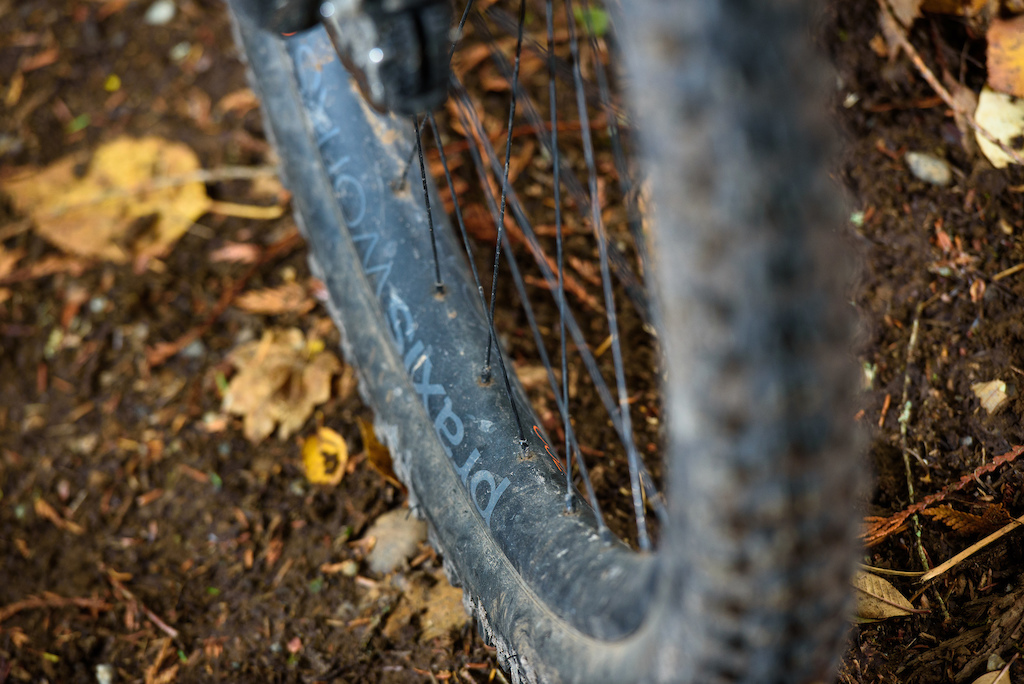
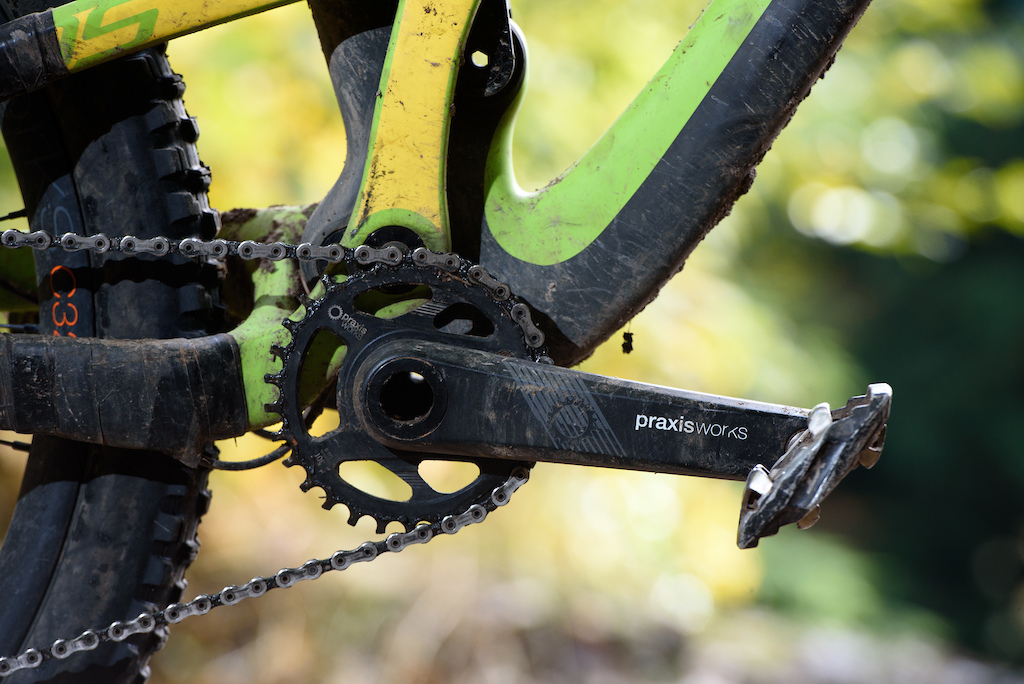

But I disagree with "I think it would ride well with a coil; I cannot see why it wouldn't."
I can see a bottom out problem with a coil
Budgets and deadlines exist.
If you need more force... the ratio is progressive, It's a paradox !
Which means this review, like most others, doesn't really address how suspension performance differs for different rider weights. I'm a big rider - Giant's Maestro, for example, tends to suck for me (as in, bottom out constantly, or lose all its suppleness with tons of air spring spacers). Light riders tend to love it. You don't hear about that in reviews.
Nothing wrong with that of course but they'd benefit way more from a shorter travel AM rig IMHO.
@g-42 Yep I read it and I get the argumentation, and by the way I really like the adressing of the mid-stroke support which I feel is very difficult to achieve on some bikes/shocks/damping settings etc, but I think if somebody cant reach full travel with a "normal-slightly progressive" rate on a 152mm bike and a capable geometry on a standard air shock without volume spacers they are either running too much pressure or would be better off with a bike with less travel (or like you said are in a weird weight range for the system)
And even then they normally "could" run a coil shock as a last resort for no ramp up at the end, and even when I have no such problems on my bike despite it being semi progressive and I am really thinking about trying the CC Coil Inline, but that possibility is kinda off with a leverage ratio like that. But yeah if its designed around air it makes sense.. I still think linear/progressive gives the rider more options.
In the end it isnt even that different from linear anyways as Mooka pointed out. But it sounds like in the article ÄHEM marketing
@daweil - Pinkbike at least tells us what the testers' weights and size stats are, so it's a little easier to figure out whether a bike will likely perform for us the same way it does for them. If I read a review where someone at Mike Levy's weight talks about a bike bottoming out or needing a lot of volume spacers, then I know I can take that one off my list. If I read a review of someone my weight talking about never hitting the bottom of the travel, then I know it's not going to work for my wife at half my weight.
But it really goes back to how much a bike's performance depends on the match with the rider - both suspension and geometry. Long legged/short torso'd riders usually do better with slightly longer chainstays; people like me (with a more ape-like short legs/long torso and arms build) tend to do better with the currently fashionable longer front triangles and shorter chainstays. Constant chainstay length throughout a model range across sizes from small to XL tends to distort stuff. And what gets tested tends to be M or L, with "average" sized riders.
An example of this - Kona's Process 111, despite not having a lot of rear travel, doesn't bottom out very easily (and when it does, it's definitely not all that harsh). That means it's well suited for heavy riders even in a middle-of-the-road spec with entry-level shocks - because there's no need for all that volume reduction. Flipside, a lighter rider would have a hard time really using all the travel (which is a bummer, given that you only have so little of it). Meanwhile, for Giant, I would never again consider one of those unless I could afford the build that came with the high-end shock (so I could dial up the endstroke support with volume spacers).
The "leverage ratio" chart
Nothing to add to the rest. The whole package has to fit the rider. My favourite bike ever (was also at a test event, first time riding with no special settings besides sag) was a Santa Cruz 5010 with a Monarch Debonair. I did not expect that performance on rougher stuff with 20mm less travel than I usually have. I instantly felt at home, did not bottom out harshly, was supple enough, and stable enough at speed. Just looked it up and its not even that progressive.
Kona process (I own a 134 and demoed a 153) have quasi-linear ratio and rely on low-volume air-chamber shocks for buiding progression. With the monarch stock shock, you cannot add or remove volume spacer, meaning that at 80 kg fully loaded I can only use 100 mm over 134 with 30% sag.
I tried it with a debonnair air chamber with different arrangement of volume spacers, it allowed to go more in the travel witout bottoming out but in this case it definetely lack of support (small shocks dive and chassis front and aft movements) needing to rely a lot on shock hydraulics (i.e. filtering) to compensate, which is not a good thing.
That said, I like my bike geometry a lot, as well as very low pedal kickback.
But I found my knolly warden miles away in term of suspension efficiency.
As for the 30% sag thing - the 111 tends to like it, and the very similar (in geometry - albeit with a Horst link suspension) Transition Smuggler does as well. But you actually DO use that initial part of the stroke - yes, you're sagged into the travel a bit, but then the wheel stays on the ground when you unweigh a bit. For technical climbing, that works pretty darn well to give good traction.
I would agree that the Process bikes aren't the most efficient for pedaling; there's definitely a bit of bobbing. Because of all that traction, that doesn't bother me too much on technical climbs; on gravel road climbs, it definitely needs the platform switch.
@daweil - I hear great things about the current 5010. Friend of mine just loves his, and it seems like a nice all-around trail bike. They build nicely balanced bikes, that's for sure. But when testing bikes, I think it's somewhat crucial to get the bike set up right. I demoed a 111 summer before last; the shop (a Kona dealer) set it up for me, and I didn't think too much about it (the numbers seemed right, between 20 and 25% sag in the rear, about 20% in the front). I rode it, and hated it - yes, the geometry seemed great, but it felt so harsh and bouncy. I had seriously thought of selling my bike and getting a 111 - until that ride. Then this spring my bike got stolen, and I demoed some bikes to find a replacement. Tried a 111, not expecting too much - but this one was set up right (by another Kona shop) - with 30% sag front and back. Different bike, and I happily own one now.
You always hear about how toxic the resins are - I wonder if the handling and disposal is much different in the US vs China.
TL;DR - just buy a Guerrilla Gravity www.ridegg.com
It's a worthy sentiment, but only relevant for locals. That could be said for any manufacturer, anywhere. For non-locals (especially those not even in the same continent, let alone country), there's got to be some other value proposition. Quality? Sounds good, but where's the proof?
The lack of mud clearance around the rear shock would bug me...
Also why does the rider in every pic looks terrified?
I think he means here where there's not much room around the shock's shafts near the linkage
Not a lot of clearance at the rocker side of the shock mount. Don't see any Cane Creek shocks being a possibility (air or coil).
Nice looking bike for sure and has all the right numbers, for me, but I couldn't personally justify the price.
www.bikerumor.com/wp-content/uploads/2016/06/Alchemy-Interview_Matthew-Maczuzak_Ryan-Cannizzaro_15-600x450.jpg
Have really liked my SB66c and it would appear this bike would be similar in feel, with less fussy internal parts like the Switch mechanisms. I like the single piece rear triangle as well, as I think it creates an overall stiffer bike (with less maintenance duties). Definitely a very present platform on the SB though. I attribute this to the Colorado heritage.
32psi f+r all year round in any conditions @175lbs!
I would pay $5000 for a "100% made in the USA frame" meaning.....designed, manufactured and all the composite material is made in the USA as well not imported.
Unless you want to provide us a list of the bikes that are so "niche orientated' to be, "about as fun as a hernia operation at the opposite task"? Cause other than just a "few" intentionally Enduro Specific Race bikes I'm having a hard time remembering the last time you reviewed a 6" bike that was so utterly pigeon holed as to not be any fun to riding it any other way...?
Here's one option:
www.mrpbike.com/1xguide
Where have u heard that before?
Every second review.
(2nd bro) It's an Arktos.
(1st bro) Arktos? Stupid name...